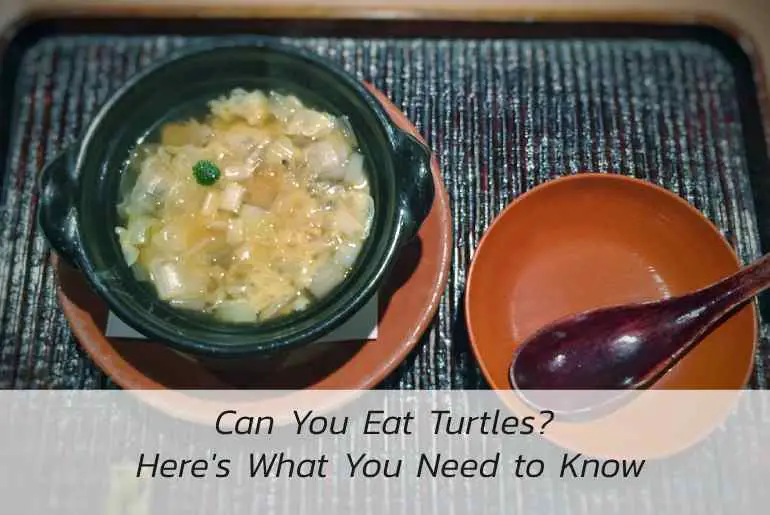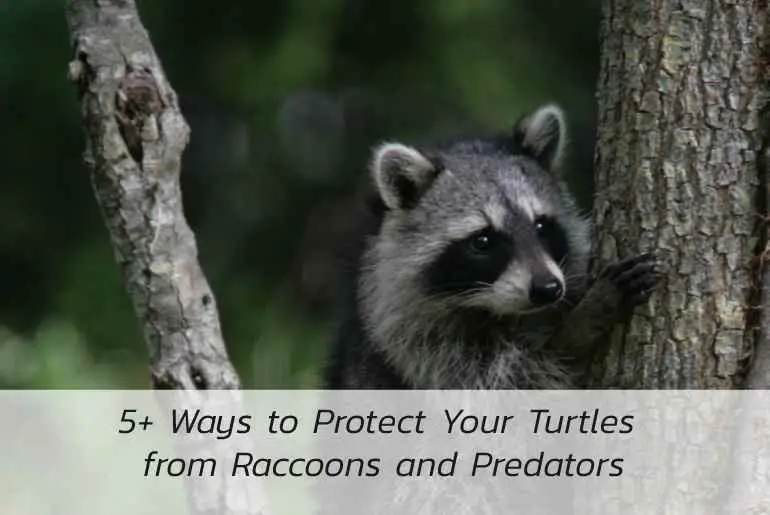Do you have a turtle as your pet? If yes, then you would have definitely asked this question at some point in time – can turtles eat mealworms?
Turtles are omnivorous and like a variety of food items in their diet. Mealworms make for an excellent supplement to their regular diet and offer a range of health benefits.
In this article, we will take a look at everything you need to know about feeding mealworms to turtles, including what they are, what makes them up, the nutrients they provide, the benefits of feeding them to turtles, and more!
Can Turtles Eat Mealworms?
As we mentioned, turtles are omnivorous creatures and enjoy a wide variety of food items. This includes both plant and animal matter.
Mealworms are the larvae form of the mealworm beetle. They are a great source of protein and other nutrients that can be very beneficial for your turtle’s health.
These worms are rich in protein and essential nutrients, but it’s important to feed them in moderation to avoid health complications. Mealworms go through four stages in their lifecycle: egg, larva, pupa, and adult.
The larva stage is when they are harvested to be fed to animals. Turtles find mealworms to be especially tasty, but they can also become addicted to them. Too much protein can cause pyramiding in turtles, which leads to further health problems.
However, moderate amounts of mealworms are an excellent source of nutrition for turtles and can help them to grow and stay healthy.
The mealworms that we commonly use as feeder insects are actually in the second stage of their lives. These larvae can grow up to 2.5 cm in length and remain in this stage for 4 to 6 weeks. However, many commercial mealworm producers use Insect Growth Regulators (IGRs) to prolong the juvenile period.
By doing so, they can prevent the mealworms from turning into beetles, which increases their shelf life. While this may be beneficial for those who sell mealworms, it is important to note that IGRs can have harmful effects on insects. In some cases, IGRs can interfere with the molting process, causing the mealworms to become deformed or even die. As a result, it is important to be aware of the potential risks before using IGR-treated mealworms.
What Makes Up A Mealworm’s Body?
Now that we know that turtles can eat mealworms let’s take a look at what makes up these little creatures. Mealworms are the larvae of the mealworm beetle.
They go through four stages in their lifecycle: egg, larva, pupa, and adult. The larval stage is when they are harvested. At this stage, they are about 2.5 cm in length and have a white or yellow-colored body.
Their bodies are made up of around 70% water, 20% protein, 5% fat, and 3% carbohydrates. They also contain small amounts of vitamins and minerals.
Mealworms are a great source of protein and essential nutrients for turtles. However, it’s important to feed them in moderation to avoid health complications.
Mealworm Nutrients
Mealworms are an excellent source of protein and essential nutrients for turtles. A single mealworm contains around:
- 20% protein
- 5% fat
- 3% carbohydrates
- Small amounts of vitamins and minerals
They are also a good source of fiber, which can help to keep your turtle’s digestive system healthy. The nutrients in mealworms can help to support your turtle’s growth and development.
Benefits Of Feeding Mealworms To Turtles
There are many benefits of feeding mealworms to turtles. These include:
A Great Source Of Protein
As we mentioned, mealworms are an excellent source of protein. This is essential for turtles as it helps to support their growth and development.
As any pet owner knows, a healthy diet is essential for keeping your animal happy and healthy. For turtles, this means a diet that is rich in protein. Mealworms are an excellent source of protein for turtles, containing 14 to 25 grams of protein per 100 grams.
In addition, mealworms are a good source of calories, providing 206 calories per 100 grams. This makes them a great option for turtles who need to put on weight or grow their muscles.
When feeding mealworms to your turtle, it is important to offer a variety of other foods as well. This will ensure that your turtle gets all the nutrients they need to stay healthy and thrive.
Turtles Love It
Many turtles enjoy the taste of mealworms. This makes them a great treat that your turtle will look forward to.
Not only do they taste good, but mealworms are also a good source of nutrition. This makes them the perfect snack for your turtle.
Has Micronutrients
Mealworms also contain small amounts of vitamins and minerals. These include iron, magnesium, phosphorus, and potassium.
While these nutrients are present in small amounts, they are still essential for your turtle’s health. Iron, for example, is necessary for the production of hemoglobin. This protein helps to transport oxygen around the body and is essential for cell growth.
Potassium is another important mineral for turtles. It helps to regulate fluid levels in the body and maintains healthy blood pressure.
Should You Feed Dried Or Live Mealworm To Your Turtles?
Mealworms can be fed to turtles, either dried or live. However, there are some benefits of feeding live mealworms to your turtle. These include:
- Live mealworms are a more natural food source for turtles.
- Live mealworms contain more moisture than dried mealworms. This is important for turtles as they need to stay hydrated.
- Live mealworms are more active than dried mealworms. This means that they are more likely to stimulate your turtle’s appetite.
- If you do choose to feed your turtle dried mealworms, it is important to soak them in water first. This will rehydrate them and make them easier for your turtle to digest.
Is There Any Danger Of Feeding Mealworms To Your Turtle?
Mealworms are generally safe for turtles to eat. However, there are some potential risks that you should be aware of before feeding them to your turtle. These include:
Addiction To Mealworms
One potential risk of feeding mealworms to your turtle is that they may become addicted to them. This means that they will refuse to eat anything else.
While this is not necessarily harmful, it can lead to nutritional deficiencies if your turtle is not getting enough of other essential nutrients.
To avoid this, it is important to offer a variety of different foods to your turtle. This will ensure that they are getting all the nutrients they need.
Lacking In Nutritional Value
Another potential downside of mealworms is that they lack some essential nutrients. For example, they do not contain any vitamin A.
Vitamin A is essential for turtles as it helps to support their immune system and vision. While you can get vitamin A from other sources, such as carrots, it is important to be aware that mealworms lack this essential vitamin.
Excess Amount Of Protein Can Cause Pyramiding
While protein is an essential nutrient for turtles, too much protein can lead to health problems. One of these problems is pyramiding.
Pyramiding is a condition where the shell of the turtle becomes misshapen. This is usually caused by a diet that is too high in protein and not enough calcium.
If you are concerned that your turtle may be at risk of pyramiding, it is important to speak to a veterinarian. They will be able to advise you on how to change your turtle’s diet to reduce the risk of this condition.
High Amount Of Fat/ Obesity
Another potential risk of feeding mealworms to your turtle is that they may consume too much fat. This can lead to obesity, which can be harmful to your turtle’s health.
To avoid this, it is important to offer a variety of different foods to your turtle. This will ensure that they are getting all the nutrients they need without consuming too much fat.
How To Raise Mealworms At Your Home?
If you want to raise mealworms at home, there are a few things you need to do. These include:
Setting Up A Container
The first thing you need to do is set up a container for your mealworms. This should be a plastic container with a lid. Make sure that there are ventilation holes in the lid.
You will also need to add some substrate to the container. This can be something like dry oats, sawdust, or shredded paper.
Screened lids are essential for ventilated containers that will house your beneficial larvae. This is to prevent other insects from wreaking havoc and eating the larvae. You can use any kind of container, as long as it is 5 inches in depth, plastic or glass.
It is not wise to poke holes in a plastic lid, however, as this creates an entry point for other pests. Ensure you have a screened lid to use as a cover for the container while still ventilating the container. By following these guidelines, you will provide an ideal environment for your larvae to grow and thrive.
Choosing Substrate
The next thing you need to do is choose a substrate for your mealworms. This can be something like dry oats, sawdust, or shredded paper.
Before you start, it is important to choose the right container. The container should be big enough to give the mealworms plenty of room to move around but not so big that they have trouble finding food.
A good rule of thumb is to use a container that is at least 10 times bigger than the worm colony. Once you have selected a suitable container, lay down a layer of substrate that is at least 2 inches deep.
Then add the worms and put a cover over the top of the container. It is important to check the level of substrate frequently, as mealworms can eat a lot in a short space of time. If necessary, replenish the substrate to ensure that the worms always have something to eat. In addition, it is important to keep the colony hydrated. You can do this by placing water-rich fruits and vegetables, such as potatoes, carrots, apples, and cucumbers, inside the container. By following these simple guidelines, you will be able to create a healthy environment for your mealworms.
Maintaining The Colony
Once you have set up your container and added your substrate, you need to maintain the colony. This includes feeding them and keeping the substrate moist.
To feed your mealworms, you can use a variety of different foods. These include fruits, vegetables, and even dead insects.
It is important to keep the substrate moist but not wet. You can do this by spraying it with water or adding a damp paper towel.
Final Words
Mealworms are great food for turtles. They are a good source of protein and have many other benefits. However, there are some potential risks that you should be aware of before feeding them to your turtle.
These include addiction, lack of nutritional value, and excess protein. If you are concerned about any of these risks, it is important to speak to a veterinarian. They will be able to advise you on how to change your turtle’s diet to reduce the risk of these conditions
You might also be interested to know more about:






